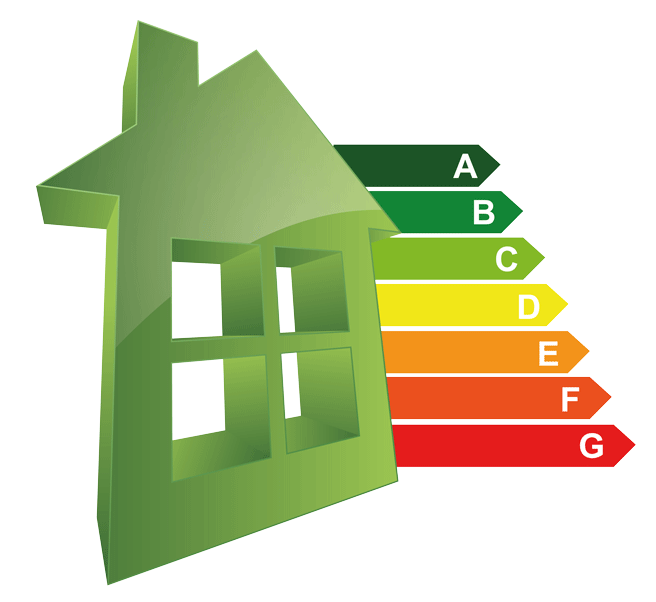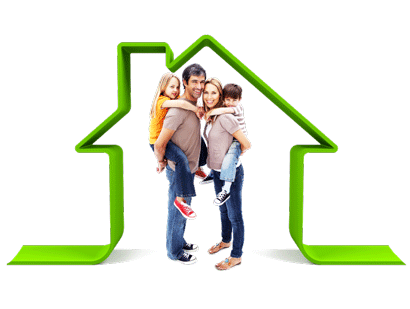بهره وری انرژی در خانه هوشمند
از دستگاههای هوشمند سازی ساختمان اغلب بعنوان تجهیزاتی که منجر به صرفه جویی مصرف انرژی در خانه هوشمند (بی ام اس) یاد میشود. اما آیا آنها واقعاً می توانند در هزینه شما صرفه جویی کنند؟
هنوز هم، بسیاری از مصرف کنندگان واقعاً چیز زیادی در مورد هوشمند سازی ساختمان نمی دانند. یا اینکه آیا واقعاً می توانند زندگی شما را در خانه بهبود بخشند. بعنوان مثال، بسیاری از خریداران نمیدانند که آیا ادعای صرفه جویی در مصرف انرژی توسط شرکت های هوشمند سازی، واقعاً صحت دارد؟
اگر به نظر شما هم اینگونه است، چرا به حقایق نپردازید و ببینید جهان درباره آن چه می گوید؟ از چند سال گذشته کارشناسان، سازمان ها و شرکت های بین المللی (knx) در مورد ساختمان هوشمند تحقیق کرده اند و زمان آن رسیده است که سرانجام بفهمیم آیا بهره وری انرژی در خانه هوشمند (بی ام اس) می توانند به شما در صرفه جویی در هزینه مصرف انرژی کمک کنند.
چه چیزی یک خانه هوشمند را “هوشمند” می کند؟
قبل از هر کاری، لازم است به خاطر داشته باشید که چه چیزی یک خانه را به خانه هوشمند تبدیل می کند. ایده اتوماسیون ساختمان بخشی از مفهوم خانه هوشمند است که تا حدودی قابل توضیح است. خانه هوشمند در اصل به معنای “زندگی بخشیدن” به وسایل با استفاده از اتصال به اینترنت است تا بتواند از ویژگی های اضافی برخوردار باشد. به عبارت دیگر، خانه هوشمند یک سیستم یکپارچه از دستگاه های هوشمند است.
اما آیا آنها می توانند از نظر مصرف انرژی نیز کارآمد باشند؟
طبق محاسبات موسسه Fraunhofer، بهره وری انرژی در خانه هوشمند(بی ام اس) میتواند تا 40 درصد در هزینه های گرمایش صرفه جویی کند. این قطعاً سناریویی ایده آل است. به هر حال، هزینه های گرمایشی به عوامل زیادی بستگی دارد و در نتیجه بسیاری از تولیدکنندگان صرفه جویی تا 30 درصد در سال را گزارش می کنند که به نظر می رسد یک ارزش واقع بینانه و قابل دستیابی است.
سیستم های خانه هوشمند چگونه می توانند به کنترل مصرف برق کمک کنند؟
امروزه روند بزرگی در بخش خانه های هوشمند قابل مشاهده است: صاحبان خانه ها برق خود را با استفاده از سیستم فتوولتائیک در پشت بام تولید می کنند. برای اطمینان از اینکه تصمیم گیری در مورد اینکه آیا انرژی کافی در دسترس است فن آوری های خانه هوشمند به آب و هوا بستگی ندارد. در آینده کنترل هوشمند خدمات ساختمان اطمینان حاصل خواهد کرد که، برق بلااستفاده ذخیره یا برای دستگاههایی استفاده می شود که منبع تغذیه آنها قابل تغییر است.
مصارف احتمالی خانه هوشمند برای مصرف برق چیست؟
هنگام صرفه جویی در مصرف برق این قانون حاکم است: بهتر است دستگاه ها را کاملا خاموبش کنید تا اینکه بگذارید در حالت آماده به کار باشند. اکثر مردم نمی دانند کدام دستگاه های الکترونیکی در خانه خود بیشترین انرژی را مصرف می کنند. هر کسی که بخواهد جزئیات مصرف خود را بدست آورد، باید پلاگین های هوشمند یا شستی های دیواری تهیه کنند. با استفاده از پلاگین، کاربران هر دستگاه الکتریکی را کاملاً روشن یا خاموش می کنند یا میزان مصرف را دستگاههای برق ناشناخته را اندازه گیری می کنند.

انرژی در خانه هوشمند، انرژی در ساختمان هوشمند، انرژی در هوشمند سازی ساختمان
در برنامه های خانه هوشمند کاربران حتی می توانند وضعیت خاموش بودن دستگاههایی که باید خاموش باشند را در حین حرکت مشاهده کنند و حتی در صورت لزوم می توانند آنها را از راه دور خاموش کنند. یا ساکنان هنگام خروج از منزل خود با یک دکمه تنها تمام وسایل الکتریکی غیرضروری را غیرفعال می کنند.
سیستم های خانه هوشمند چگونه گرمایش را کنترل می کنند؟
ترموستات هوشمند بخشی اساسی در هر سیستم مدیریت انرژی است.(زیرا سیستم گرمایش و سرمایش خانه یکی از بزرگترین مصرف کنندگان انرژی در خانه است). سیستم های خانه هوشمند بسیاری از بخاری ها را قابل برنامه ریزی می کند. اگر صاحبان خانه در ساعات مشخصی از روز حضور نداشته باشند، رادیاتور آنها به طور خودکار خاموش میشود. اگر زودتر از موعد به خانه برسند، میتوانند از طریق یک برنامه به خانه هوشمند خود دسترسی پیدا کنند. به عنوان مثال لازم نیست که گرمایش را هنگامی که در طول روز هیچ کس در خانه نیست فعال کنید. اما حتی هنگام دستگاه گردش هوای گرم نیز لازم نیست روشن باشد. وقتی پنجره باز است، گرمایش در یک خانه شبکه ای به طور خودکار کاهش می یابد. البته در صورت لزوم می توان گرمایش را به صورت دستی نیز کنترل کرد.
دستگاه های خانه هوشمند برای بهره وری بیشتر انرژی
برنامه های مربوطه دستگاه ها در خانه هوشمند به کاربران امکان میدهد تا مصرف انرژی را ردیابی کنند. آنها همچنین می توانند برآورد کنند که چه مقدار برای هر دستگاهی که به برق وصل شده اند می پردازند. این امر بر رفتار مصرف کننده تأثیر می گذارد. همچنین به مردم کمک می کند تا انرژی بیشتری داشته باشند و در طولانی مدت مسئولیت پذیر باشند.
وظایف
افزایش هزینه های انرژی منجر به استفاده دقیق تر از انرژی در خانه هوشمند (بی ام اس) در دستور کار جامعه ما قرار گرفته است. به همین دلیل، ما به راه حل های جدید برای بهینه سازی مدیریت انرژی نیاز داریم.(چیزی که با استفاده از استاندارد KNX می توان به دست آورد)
صرفه جویی در انرژی این روزها مسئله ای بسیار مهم است. اگرچه بدیهی به نظر میرسد که ساده ترین راه برای صرفه جویی در مصرف انرژی فقط، کم مصرف کردن است. اما از نظر عملی بسیار دشوارتر است. سیستم ها و دستگاه های خانه هوشمند با اجازه دادن به کاربر برای نظارت و کنترل مصرف انرژی به روش های جدید، به صرفه جویی در مصرف انرژی کمک می کنند.
راه حل
در جایی که سیستم های KNX نصب می شود، ساکنان در مورد مصرف انرژی فعلی خود مطلع می شوند تا بتوانند از آن به اقتصادی ترین شکل استفاده کنند. وقتی از KNX برای کنترل و نظارت بر کاربردهای مختلف داخلی استفاده می شود، کل مصرف انرژی کاهش می یابد. علاوه بر این، کاربران می توانند میزان واقعی استفاده از انرژی خود را در نمایشگرهای تصویری کنترل کنند و فرصت دارند اقدامی انجام دهند تا بتوانند مصرف خود را هر چه بیشتر، چه در خانه باشند و چه دور از آن، کاهش دهند.
پیاده سازی راه حل های یک خانه متوسط:
- کنترل روشنایی (MECEL) با ظرفیت کنترل کل خانه در مناطق یا به صورت گروهی.
- کنترل HVAC با (KNX (Intesis با قابلیت کنترل هرگونه تجهیزات موجود در بازار.
- صفحه های لمسی (JUNG و Zennio) نمایشگر های بصری خانه را ارائه می دهند.
- (AGPRSmodule (Analasuslabs به کاربران این امکان را می دهد تا سیستم را در خانه یا دور از آن کنترل کنند.
- دستگاه ها و نرم افزارهای اندازه گیری هوشمند. (Multidomo Networks) برای اندازه گیری مصرف انرژی، آب، گاز و غیره
امکانات
- کنترل روشنایی نور متناسب با نیازهای کاربران
- فیبرهای حسگر نوری برای سیگنال دهی بهتر در شب
- سناریوهای مختلف، با توجه به نیاز کاربران
- نظارت بر اضافه بار سیستم
- ترموستات یکپارچه برای استفاده و کنترل آسانتر HVAC تجهیزات به منظور استفاده بهتر
- نظارت و ضبط داده ها در زمان واقعی (دما، مصرف انرژی، آب، گاز …) ارائه یک نمای کلی از مصرف، به کاربران اجازه می دهد اقدامات بیشتری انجام دهند
مزایا
با ادغام همه برنامه ها در یک تاسیسات KNX، کاربران گزینه های زیادی برای نظارت آسان و جامع به یک سیستم کنترلی دارند که بصورت قابل درکی برای کار و استفاده است. علاوه بر این، مزایای زیر نیز وجود دارد:
- سنسورهای فیبر نوری را می توان در هر قسمت از خانه نصب کرد.
- مصرف هوشمند اندازه گیری شده باعث آگاهی کاربران از اتلاف انرژی خواهد شد.(به آنها امکان صرفه جویی در مصرف انرژی و هزینه را می دهد)
- تایمر می تواند متناسب با نیازهای فرد پیکربندی شود و همچنین می تواند در هر زمان متوقف شود.

انرژی در خانه هوشمند، انرژی در ساختمان هوشمند، انرژی در هوشمند سازی ساختمان

